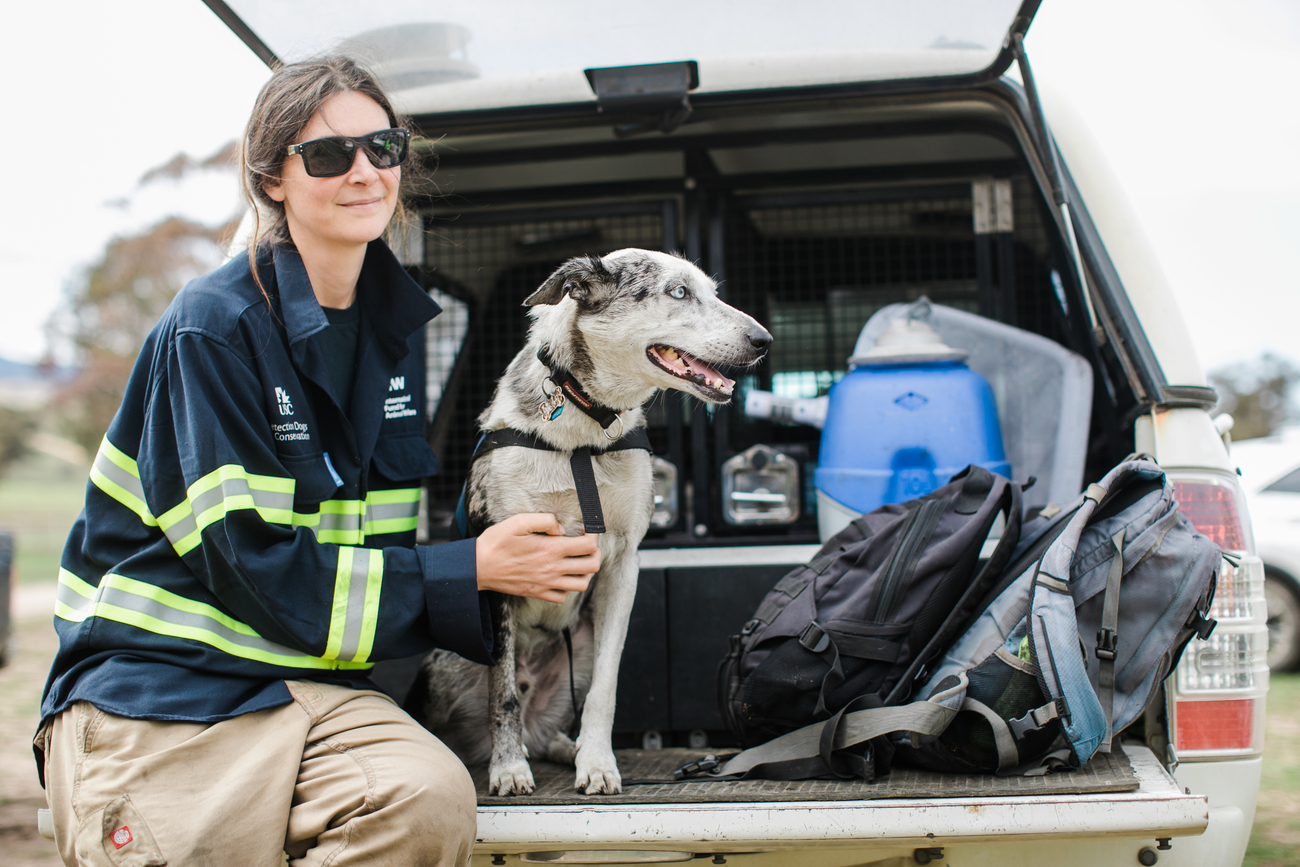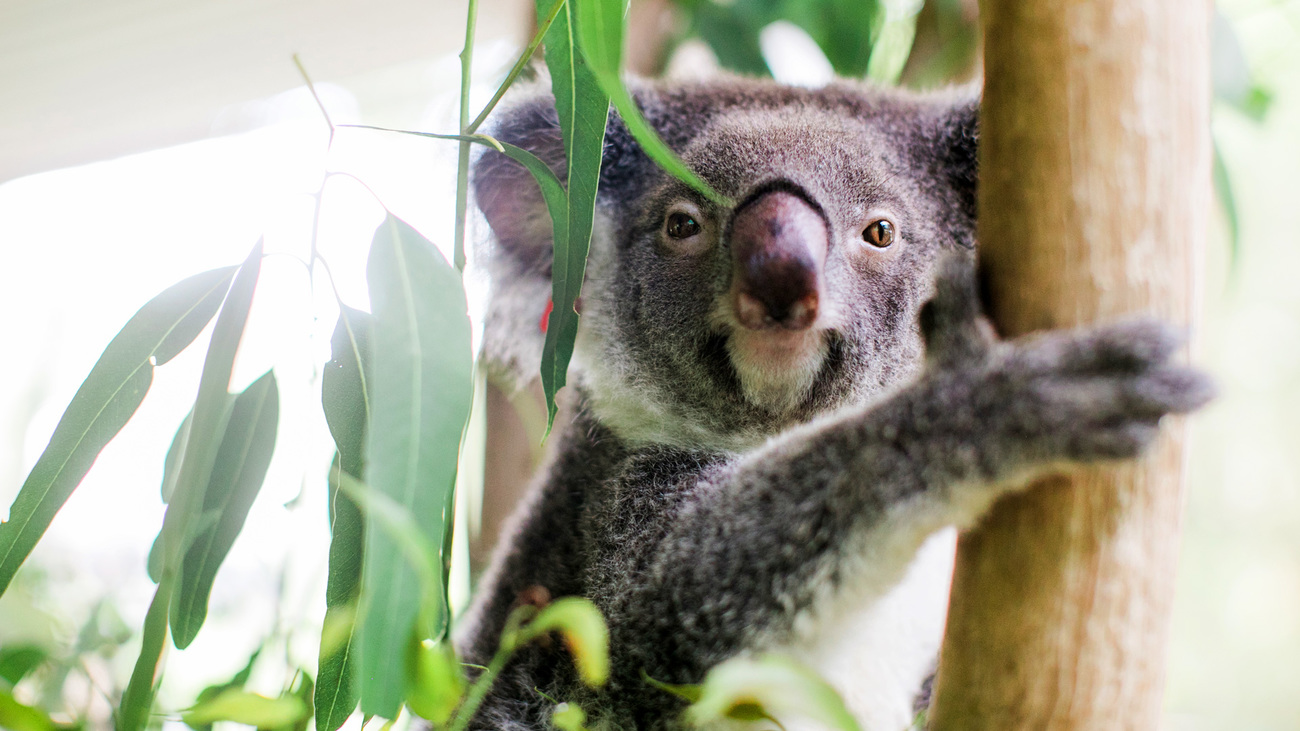Blog
What is Earth Day?
Read moreBear update: koala detection dog crucial in the 2019-2020 Australian bushfires

By now you’ve met USC x IFAW’s koala detection dog, Bear. Not only do our social media fans love him, but his work has been shared far and wide by celebrities and in documentaries around the world.
Bear is a five-year old Australian koolie dog who wasn’t quite a fit for the average home due to his obsessive-compulsive behaviours, but his unique temperament makes him perfect for tracking live koalas in the wake of habitat devastation like the 2019-20 bushfires.
Finding koalas can be a difficult task. They camouflage well, they are quiet, and usually sit very still. But dogs can smell what we can’t see, including koalas. These dogs, together with USC’s drone, equipped with a thermal camera, greatly increase koala detection rates.
IFAW’s recent koala population report provides the scientific evidence of at least 6,382 koalas killed in the recent bushfires in New South Wales alone. Many koalas and other wildlife were sadly burned to ash, but where hope still has a place, so too do koala detection dogs like Bear.
From November 2019 to April 2020, we are proud to say Team Bear has found more than 100 injured, sick, dehydrated or starving koalas who were able to be assessed and when needed, brought into care.
During the active bushfires, we worked with local koala experts and wildlife rescue groups to target areas where koalas had been impacted by fire. We helped look for koalas that were known to live in these areas, and some that had been observed as injured but escaped rescue attempts.
Since then, we’ve continued surveying burnt areas in QLD, NSW and the ACT. We observed koalas returning to their favourite trees in their home ranges, only to find the canopies completely burnt. Others survived in a small unburnt patch but are now isolated and surrounded by vast tracts of inhospitable habitat.
USC x IFAW and our partners responded urgently where needed most. We provided urgent veterinary care and equipment, rehabilitation expertise and enclosures, and wild rehoming where possible up and down eastern Australia. The work continues to this day, as even the most burned koalas like Ember are gaining the strength to climb the trees of their native habitat again.

What’s it like working with Bear in the field?
How do we find a koala?
As fires subside and it’s safe for us to go in, the team may first deploy drones equipped with infrared cameras to help us narrow in on the location of live koalas. Then it’s time to trek in on foot, and this is Bear’s time to shine.
We give Bear his favourite command “Let’s go find!” and he is off and running. As Bear begins to smell fresh scats and urine, he knows he’s on track. He will drop to the ground to tell us “follow me”. We travel light with our team of three, including Bear himself, his handler and a koala spotter. While the handler’s eyes focus on Bear on the ground, the spotter scans the tree canopy.
Finally, Bear will drop to the ground and refuse to budge, indicating to us that it’s time to scan the canopy above and find the koala. This is a tough moment for Bear, as he looks expectantly at us. I always wonder what he thinks, but I believe it’s something like “Come on humans! Unbelievable. Can’t you smell that? It’s as obvious as a koala nose in the middle of a koala face!” (a familiar French phrase). When we finally set our eyes on the koala, Bear gets his ball as a reward. For him that is heaven!
What do we do when we find a koala?
When we find a live koala in the fire grounds, we first assess its health and safety from the ground. We look at its physical body condition, weight and the health of its scat found near the base of the tree. We also assess whether there is enough food available in the surrounding habitat. We bring all of this information together to decide if the koala needs rescue and treatment by veterinarians.
If so, we begin the careful attempt at safely catching the koala. We may use a long pole with a flag at the top to coax the animal down the tree or we leave a gentle “trap” at the base of the tree overnight.
From there, we will transport the koala to a local wildlife triage centre or koala hospital to be urgently assessed by veterinarians. Burns are obvious, but smoke inhalation is less so. Koalas in poor condition must stay in care until they have fully recovered.
Meanwhile, our detection dog team will continue moving quickly through the location to locate other koalas in need. The goal is to help as many koalas as possible from as many places as possible – and time is not our friend. As days and weeks go by, we are at risk of losing more koalas due to secondary infections and starvation.
Are rescued koalas released back to the wild?
Koalas come into care with a variety of injuries and needs. Some may only need rest and hydration, and our partners can release them days later to a healthier location near to where they were found. Others require time to heal their burns and strengthen their ability to climb again. Our hope is always to see them back in the wild places they call home.
How do we care for Bear himself?
Bear and our team only deploy when authorities have given the “all safe” after a fire. This is usually when the ground has cooled and the unique, often hidden dangers of the fire grounds have been mitigated. The team is sure to follow government training and protocols in the field, and we all wear protective equipment – including Bear with his famous booties.
We are equipped to track koalas all day, and the human part of the team is usually the one that needs breaks, not Bear! One thing Bear does love, however, is to find nice puddles to lay down in. But only for a few seconds – then he is off and running again!
Bear loves treats any day, but added food and water are even more helpful during deployment to keep his energy up. He snacks as much as we humans do, and the USC Detection Dogs for Conservation program has long partnered with family-owned Australian treats company, Huds and Toke.
What’s next for the USC koala detection dog program?
We have been training Bear and four of his mates as part of the USC Detection Dogs for Conservation program since 2015, and their role in the 2019-2020 bushfire season further solidifies the value of this important work.
Through increased research and grant programs, we strive to learn even more from this unprecedented and devastating event: Where have koalas survived? Do they have enough food left in those habitats? What condition and health are the koalas in, now and for the future? There is so much we need to learn from this fire so we can help koalas better during the next fire season.
Bear continues his life-saving work today, even as the world focus turns to the COVID-19 pandemic. Our USC experts and partners know the bushfires will be back, and there is no time to spare when it comes to saving what remains of Australia’s iconic wildlife.
We will be prepared, and ready to toss the next ball to a happy and excited Bear!
-Dr. Romane Cristescu, USC Detection Dogs for Conservation researcher
Every problem has a solution, every solution needs support.
The problems we face are urgent, complicated, and resistant to change. Real solutions demand creativity, hard work and involvement from people like you.
Unfortunately, the browser you use is outdated and does not allow you to display the site correctly. Please install any of the modern browsers, for example:
Google Chrome Firefox Safari